Final Fantasy XIII-2's box art features the indomitable Lightning, looking strong and feminine in her tough-as-nails armor and flowing skirt of feathers. You remember Lightning, of course: she spent the majority of Final Fantasy XIII trying to release her sister Serah from a crystalline prison. Don't let that gorgeous portrait of the daunting heroine fool you, however. She has a part to play in this direct sequel, but it's Serah's turn in the spotlight now. Serah's not the powerhouse personality her sister is, but that doesn't keep Final Fantasy XIII-2 from delivering a satisfying mix of poignant storytelling and exciting action.
That isn't to say Final Fantasy XIII-2 is as epic an adventure as you may have expected. The story isn't long as far as Japanese role-playing games go--maybe 25 hours for a standard playthrough. There are reasons to linger or return if you're the completionist type, but the length is a consideration for series fans hoping for a Final Fantasy-sized adventure. If those 25 hours were jam-packed with challenging action and dramatic cutscenes, perhaps you wouldn't notice the story's brevity. Alas, a lengthy fetch quest makes the game drag considerably, as does a protracted platforming sequence that causes the pace to chug as you near the conclusion, right when you'd expect the tempo to take off. The cinematics and battles both burst with occasional thrills, but it's as if developer Square Enix decided that unnecessary padding was the proper solution to the problem of Final Fantasy XIII's overly linear progression.
If that sounds like a lot of negativity, don't worry: Final Fantasy XIII-2 may not be the super-great RPG you might have wanted in a series known for reinventing itself at every turn, but it's still a very good one. You could say the same thing about lead character Serah: She's a good, not great, leading lady. She doesn't have the steely strength of Lightning, though she isn't as annoyingly dainty as Final Fantasy XIII's Vanille, either (though she does have her overtly girlish moments as she twitters with the affected chirps and sighs of the prototypical Japanese RPG heroine). But she's a perfectly serviceable "every girl" who teaches school in her village on the world of Pulse, just a few years after the bitter victory that concluded the previous game.
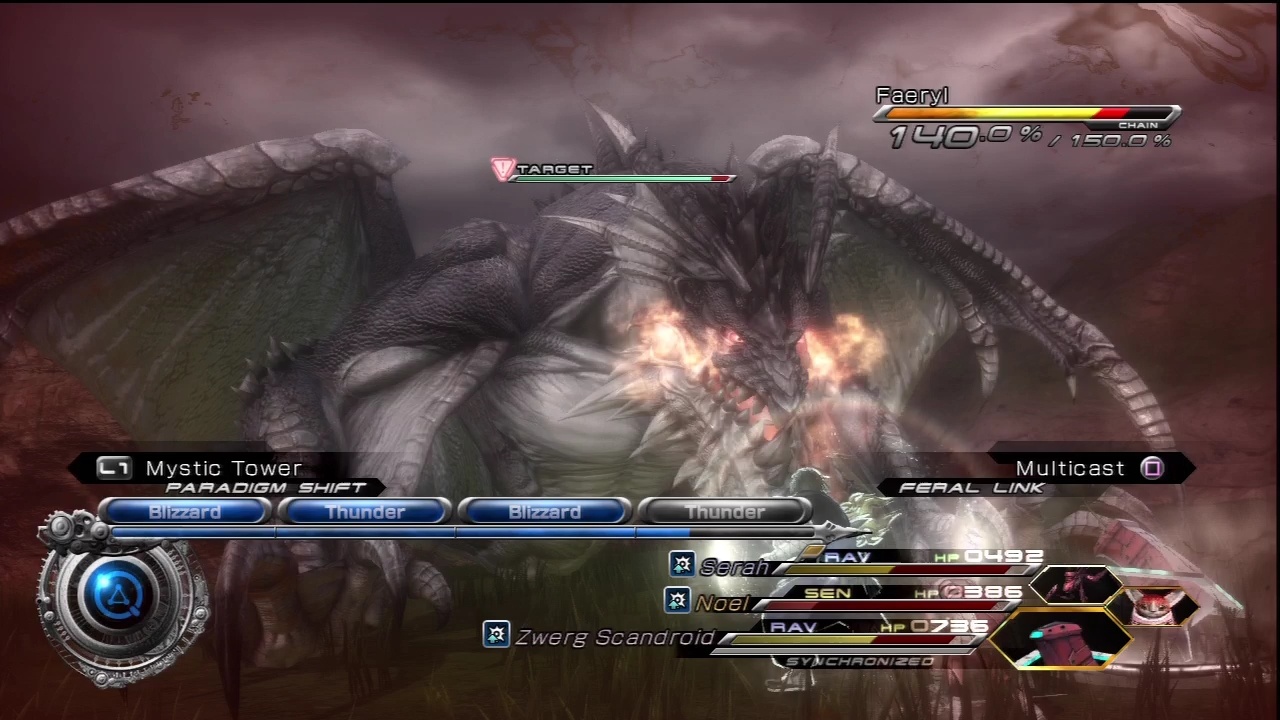
Serah's purpose is to find Lightning, who is assumed to be gone for good--perhaps inhabiting the crystal pillar holding up the orb of Cocoon, along with Fang and Vanille. But Serah remembers events no one else does; most importantly, she remembers her sister's blessing to marry Snow, though Lightning was not always so fond of him. She knows Lightning must be alive, and she's right, of course. Lightning resides in Valhalla, a realm that exists outside of the constraints of time, where she's locked in struggle with a man called Caius. The game's initial moments dramatize this conflict in fine fashion. Caius speaks with a quiet confidence, his voice filled not so much with rage as with brazen purpose. He and Lightning stare mercilessly into each other's eyes and their swords meet, emanating a blaze of blue light. Soon thereafter, you take control of Lightning atop Odin in his form as a mechanical steed, fending off the ominous winged Bahamut in the game's first tutorial.
It's a pity that the game's two most engaging characters--Lightning and Caius--have considerably less screen time than Final Fantasy XIII-2's protagonists. Caius is a compelling villain, in part because his villainy isn't the typical in-your-face, menacing, power-hungry gnashing of teeth. It's sorrow that drives him, and as the source of this sorrow becomes clearer, your empathy grows. His emotions are distinctly, authentically human, and he isn't inherently evil; thus, he is a much more interesting villain than the usual frothing maniac. Caius gets his chance to chew the scenery a number of times, though where male characters are concerned, your focus is generally on Final Fantasy XIII-2's other lead: Noel. Noel's from the future--a future in which Cocoon has collided with Pulse many years before. He arrives in Valhalla where he witnesses the clash of the two titans, but he escapes to the past (and to Serah's side) at Lightning's behest. His hopes are somewhat loftier than Serah's. She wants to find her sibling; he has an entire future to change.

And so the two set out on a journey across time, hopping from one level to another, with each one representing a different place or time. The two make a blandly pleasant team, and apart from a third slot designated for voiceless monsters (more on that to come), they are your sole party members. Where Final Fantasy XIII's party members had plenty of interpersonal conflicts to overcome, Serah and Noel get along nicely enough. Moments that could have had great poignancy in the first half of the game--multiple reunions among them--are curiously bereft of tension and emotional impact.
On the other hand, the game's second half features an extended sequence that combines gameplay and narrative in powerful ways. To fully describe them would risk spoiling what makes them so intriguing. But consider this circumstance: you wander through desolation, citizens of another time appear as semitransparent figures. You can normally phase transparent objects into your own time, thanks to the moogle that hovers and whirls at your side (useful when you find a treasure sphere, shimmering and bobbing somewhere nearby). When you phase in one of these human figures, he falls to the ground dead, crying out to his goddess. It's shocking and heartbreaking, yet not a major plot point; it just happens as the result of experimenting with a routine game mechanic. This may seem a mere detail--a subtlety you could overlook. But it's this kind of touch that gives the game's latter hours so much heart and heft.

You won't mind spending so much time with Noel and Serah. The actors deliver their lines in earnest, though other characters aren't so uniformly excellent. Final Fantasy XIII's Hope and Snow both reappear; Snow as stubborn as ever and Hope less whiny than before. You could even call him strong and likeable. Hope's assistant Alyssa, on the other hand, is insufferably precious, while feathered shopkeeper Chocolina's soprano screech might have you shoving chocobo feathers in your ears. Inconsistent acting aside, Final Fantasy XIII-2's production values are impressive, the occasional frame rate dips notwithstanding. But the sequel is more visually diverse. In Augusta Tower, neon yellow and orange accents provide a striking contrast to the blue checkerboard walls. That area couldn't be more different from the Archlyte Steppe, where the grassy plains harbor grazing sheep and a machine allows you to control the wind and weather.
Of course, Final Fantasy XIII-2 is more than a semicoherent time-traveling tale threaded through a hodgepodge of beautiful settings. It's a full-fledged role-playing game that builds upon its predecessor in sensible ways. Does that make it ultimately a better game than the previous one? Not necessarily. It certainly addresses the issue of linearity that irked so many of XIII's players, though. Rather than follow a narrow path toward your eventual goal, XIII-2 offers room to breathe. Many areas--too many--are still collections of constricted paths. But in regions like the aforementioned Archlyte Steppe, you can venture off on your own and uncover the secrets waiting for you. (Caution: touching a cactus may not have the expected effect!) Citizens may offer you tasks, though these are few and usually amount to no more than "find me some missing items" or "kill a big monster." If you're so inclined, you can also head to Serendipity--a casino that exists outside of the normal constraints of time and space. Play the slots. Enter your chocobo in some races. Such side activities are good for the occasional diversion, but they're not so urgent or addictive that you would lose hours to them.
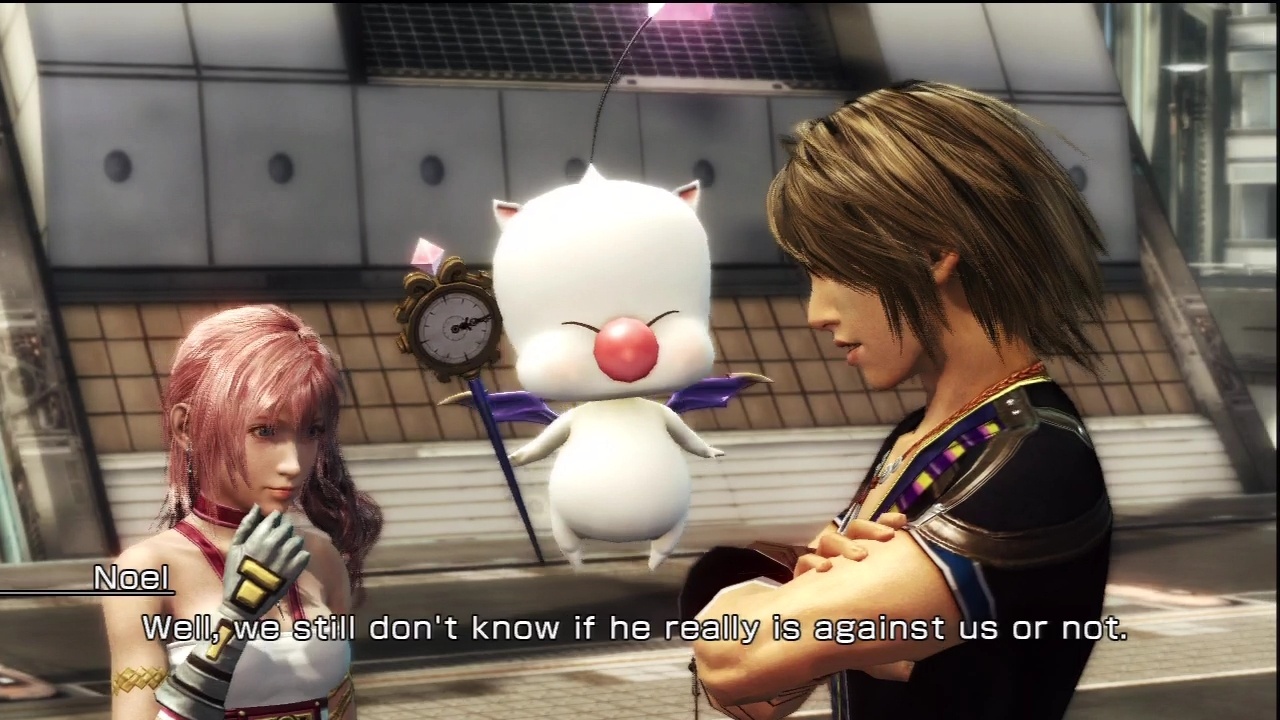
The overall structure also invites nonlinear exploration. Once you've unlocked a node that represents a particular place/time period, you can visit whenever you like. In fact, a later quest has you hopping around multiple nodes, scouring every square inch of the land in search of shimmering objects hidden in some of the most ridiculous places. (This excruciating quest is old-fashioned padding at its worst.) Thankfully, such time hopping is usually optional, but it often gifts you with unexpected results. You can return to the area as you left it--or you can reset it and play it as though it's your first time. Doing so allows you to choose different dialogue options or, perhaps, to approach some dangerous behemoth differently from the first time around. It's best left to discover on your own what benefit such excursions might bring you. Let's just say that when it comes to time-travel stories, the future isn't always absolute.
Freer exploration aside, Final Fantasy XIII-2's moment-to-moment gameplay is remarkably similar to its originator's. Moving about the world causes monsters to spawn, and you can run away from them, but you'll usually wish to attack. As before, party members have combat roles associated with them (ravager = offensive magic; synergist = defensive buffing). As you level up, you earn new roles to take on, so Noel and Serah aren't limited to a single role. From there, you create combinations of roles called paradigms. When battle commences, you enter the battle arena, an action bar called the ATB gauge fills, and you queue up actions for your party leader. (Other party members perform their actions automatically.) When the gauge is full, you unleash your skills, whether that means healing your ailing friend or casting lightning bolts at marauding ghouls. And should you need to, you can switch to a different paradigm during battle.
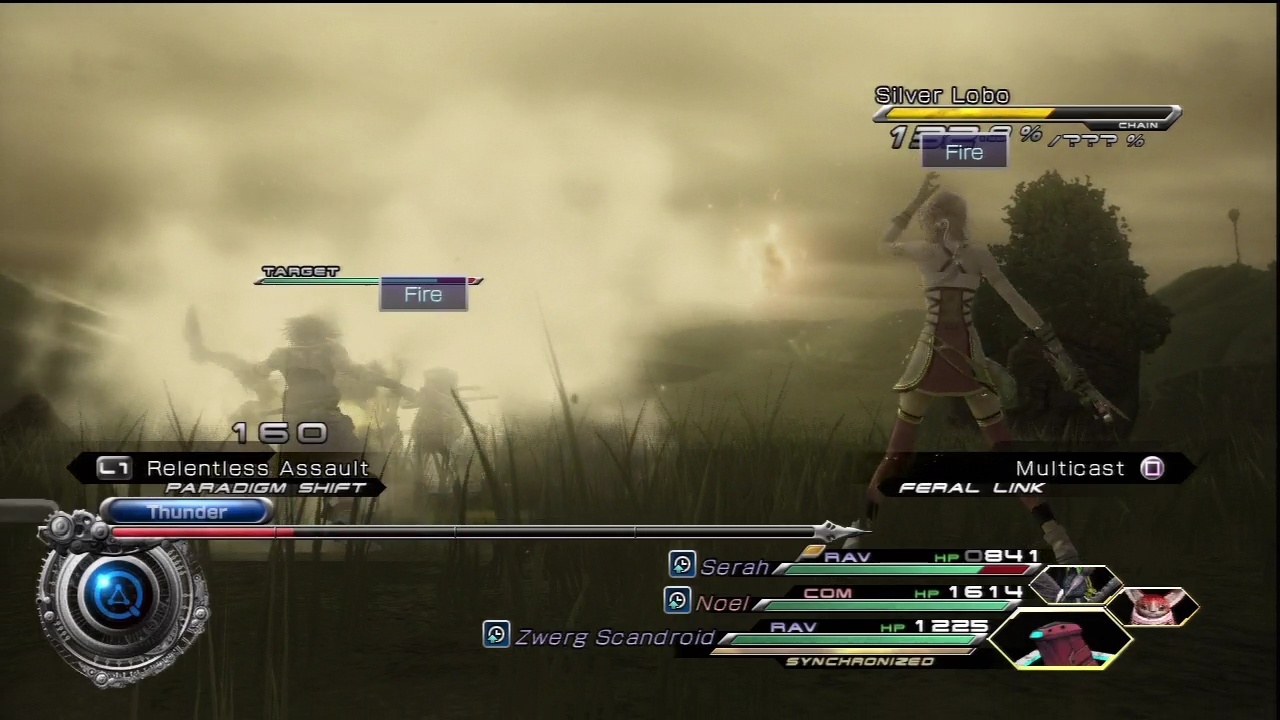
The action's primary strategic consideration lies in knowing how to put together successful paradigms and when to use them. There's also an additional consideration this time: the most powerful enemies can inflict blood wounds, reducing your maximum amount of health during the fight. Until you reach the final boss gauntlet, however, you'll rarely worry about blood damage. Simply put, Final Fantasy XIII-2 is noticeably easier than Final Fantasy XIII. If XIII's Eidolon battles had you pulling out your hair in frustration, this may come as welcome news. But in XIII-2, you can overcome a few too many battles by just setting your party to an offensive paradigm and letting things take care of themselves.
Nevertheless, combat is fun, even when it's on the easy side. This is due in part to all of the flash and sparkle. Fire and ice light up the battlefield as you fight a goblin chieftain in the murky plains. Noel slices up ghasts, leaping through the air like a circus acrobat that has forgotten the laws of gravity. And the battle music eggs you on with its skipping beats and busy melodies. When you do encounter a creature that tests your wits, your fingers and brain stay busy, moving back and forth the paradigms that best keep your teammates alive while edging some heaving monster closer to its breaking point.
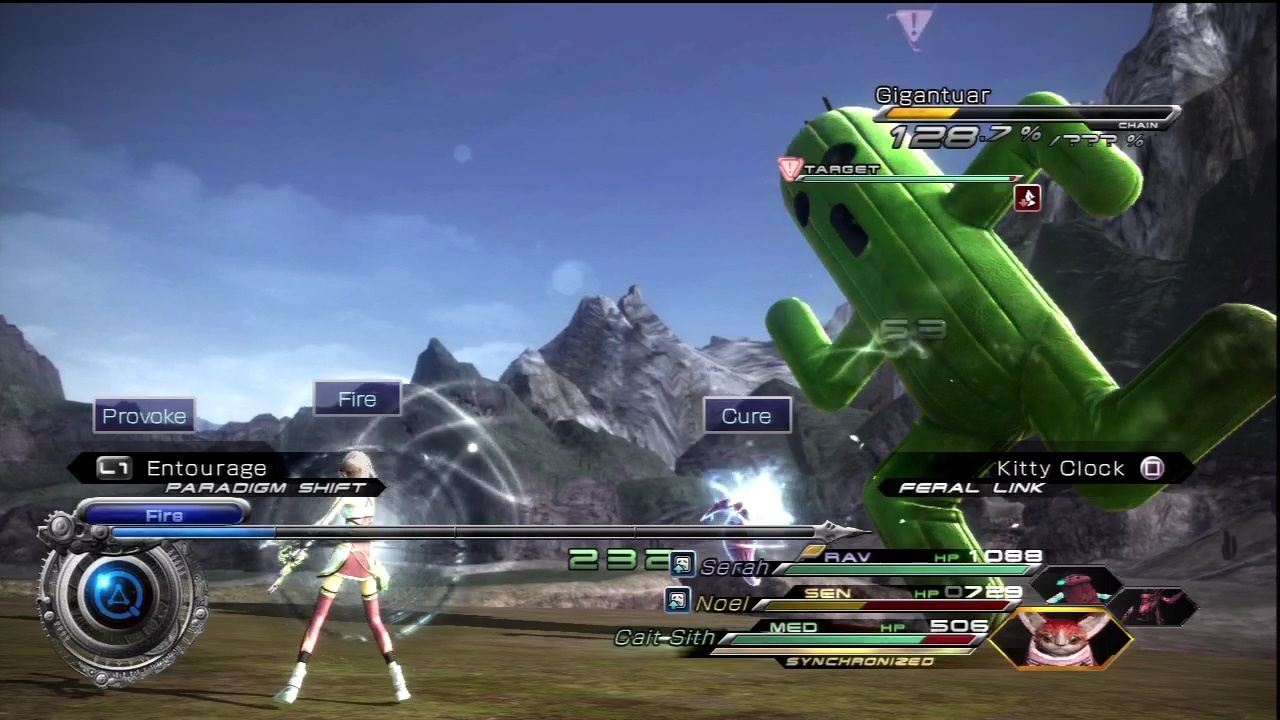
But monsters aren't always enemies; in Final Fantasy XIII-2, they can be your best friends. You see, there's that third-party slot. And that slot is reserved for monsters you capture on the battlefield. Whenever you defeat a monster, there's a chance it'll leave a crystal behind. Should it do so, you now have one such creature to call your own. Each monster has its own combat role assigned. Cait sith is a medic; the zwerg scandroid is a ravager. One by one, you start to collect these monsters and assign them to your various paradigms. Switching a paradigm doesn't mean just switching combat roles--it often means switching monsters as well.
Collecting, using, and improving monsters is the game's most interesting and enjoyable mechanic. There's the whole rewarding Pokemon-esque "catch-'em-all" vibe to it. Grabbing more monsters for your roster is addictive, in part because it's fun to see what they bring to battle. The wolfish snarl of a silver lobo makes that monster a powerful battlefield presence; the thing looks like it could bite off a limb and leave a bloody stump behind, just for giving it a dirty look. For some comedy, try capturing the gigantuar, if only because its awkward poses and garish green color make it look so hilariously clumsy during a battle to the death. Monsters level up separately from Serah and Noel. Each possesses its own crystarium; that is, its own leveling-up matrix. And while you spend crystogen points (read: experience points) to improve your human party members, monsters require specific items that you must buy or earn as battle spoils.
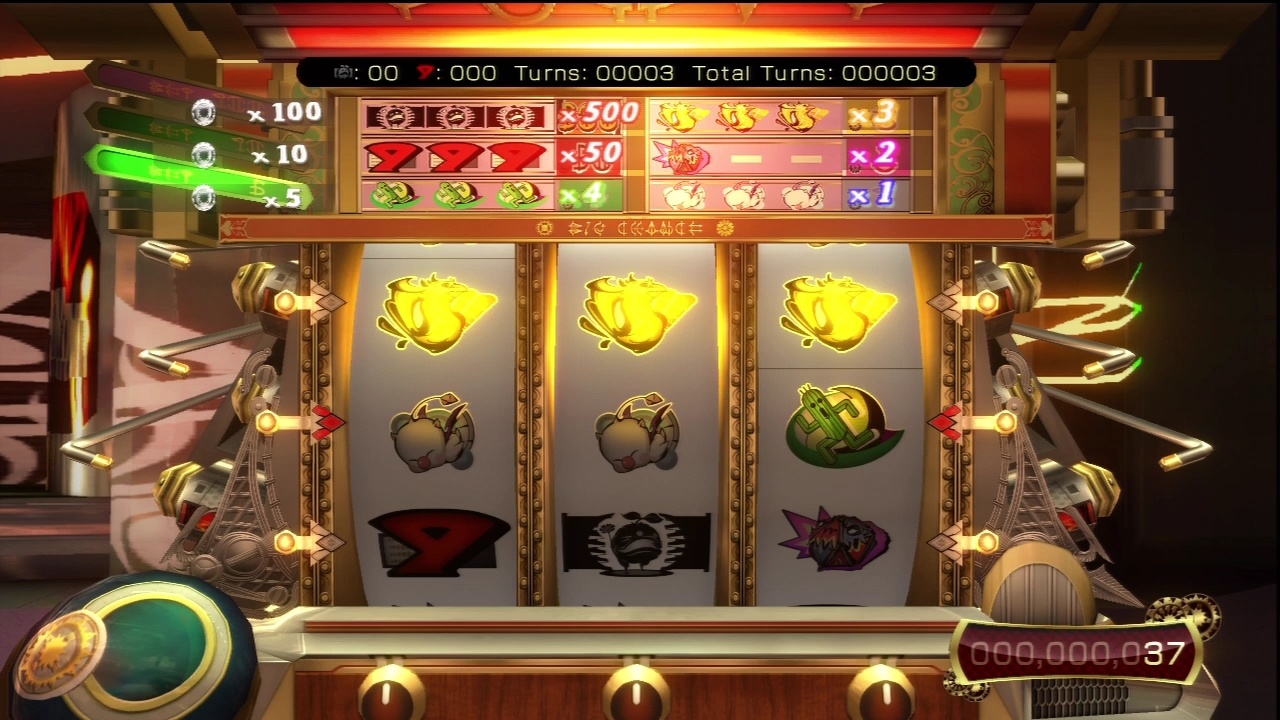
If that aforementioned battlefield comedy is your thing, you can even outfit your monsters with trinkets. Stick a jaunty hat on a toothy ceratoraptr's head. Adorn your creepy managarmr with a four-leaf clover and then name it Mortimer. Watch these monstrosities charge about the arena, putting on vaguely ridiculous airs afforded by these silly accessories. Like most of the game's frequent cutesy touches, you might find such details charming or you might find they distract from the serious tone Final Fantasy XIII-2 cultivates. In any case, the adornments have no value beyond the aesthetic. If you want to further improve your monsters, you can combine them, sacrificing one monster in favor of granting bonuses (normally passive ones) to another. Just be careful to choose your sacrifices wisely. There are rare monsters out there, challenging to find but not always certain to be captured. You don't want to cast one monster aside in favor of some twerp that just can't bring the same kind of power and presence to battle.
In keeping with the game's "more freedom, more quickly" approach, your main party's crystariums offer more flexibility than before. You earn new roles and level them up quickly, so Noel and Serah can fulfill the roles you imagine for them, and you can choose the monsters that best pick up any slack. Progression is a pleasure. You earn points so fast that waiting a few hours to apply them means zipping through the crystarium with glee, washed along by the smooth chimes of its audio cues while watching your levels rise higher and higher. By the time the story ends, you might fully level three different roles for each character and be well on your way to topping off a fourth.
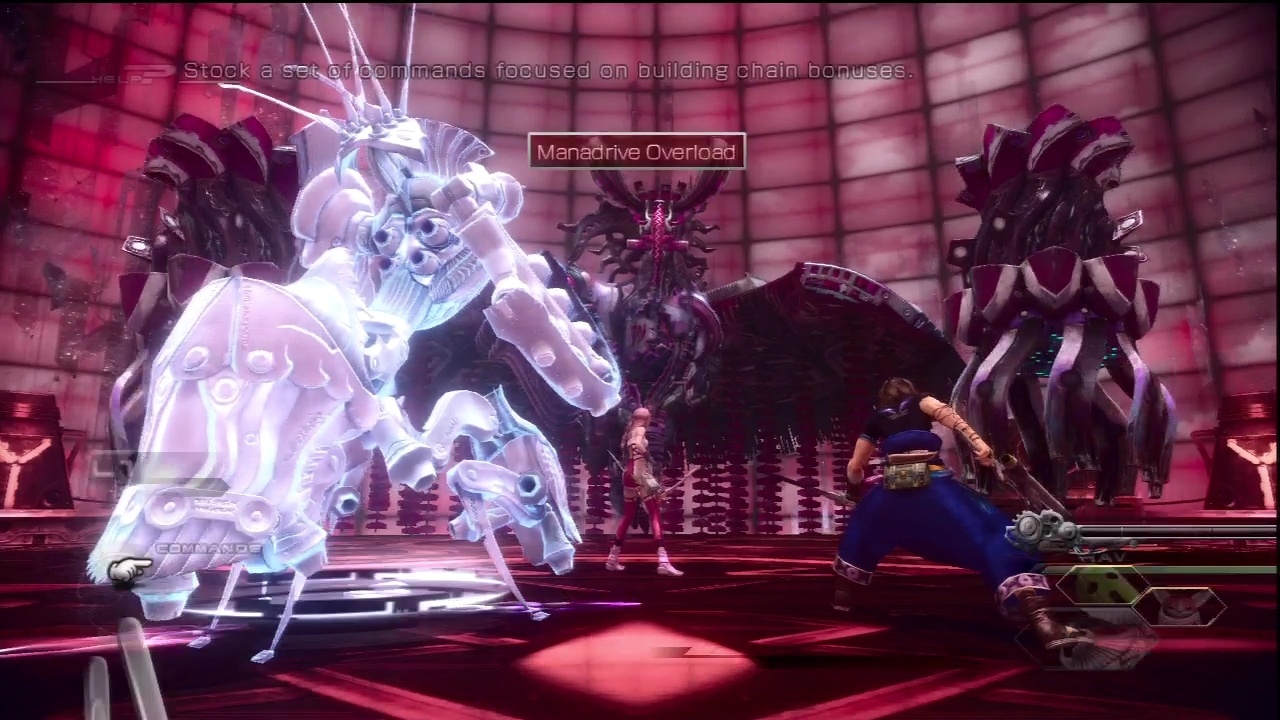
Square Enix should be commended for addressing Final Fantasy XIII's problems and for once again delivering a fun and highly playable RPG glowing with visual beauty and saturated with simple but universal sentiments. Nevertheless, the improvements feel less weighty than they might have--mechanical triumphs in a game that feels less than the sum of its parts. You won't perform awe-inspiring summons as a matter of course, and the ending--well, the ending isn't likely to leave you with the sense of closure you might want. Yet the monster collection and time-hopping freedom alone are enough to make it worth embarking on this enjoyable adventure. Just remember to keep your expectations in check: Final Fantasy XIII-2 isn't a timeless adventure in the grand tradition of the beloved series. But if you're curious to see the next stage in this ongoing tale, there's no reason you shouldn't chase after Lightning. After all, she can't defeat Caius without you.